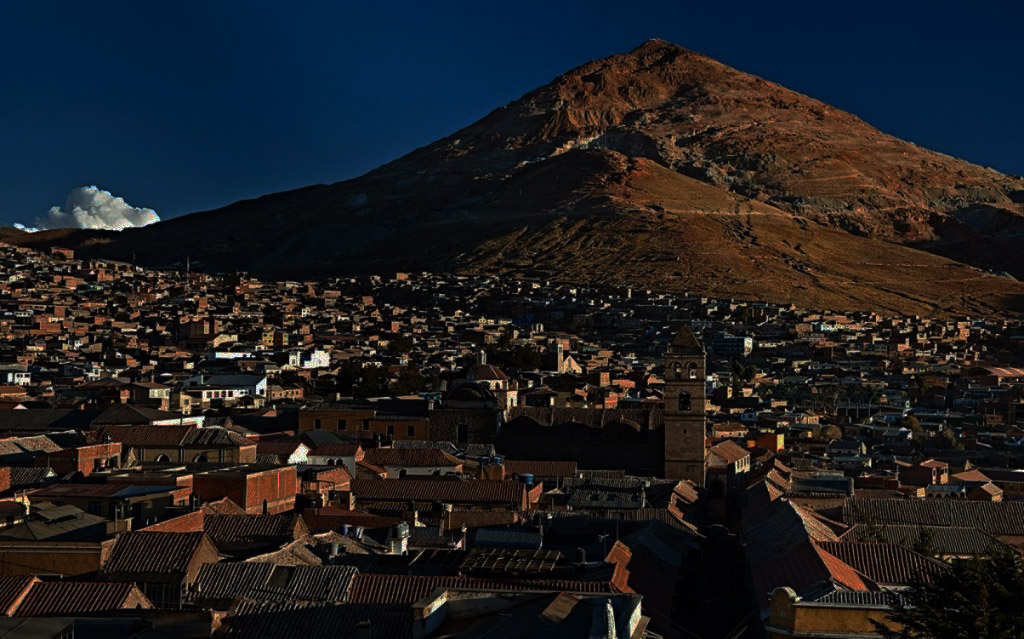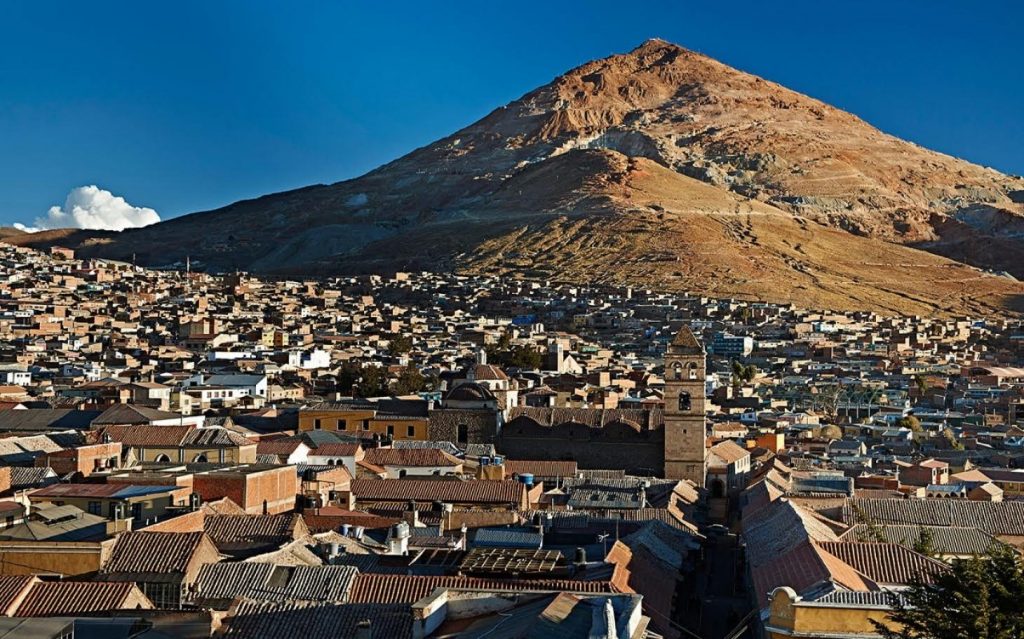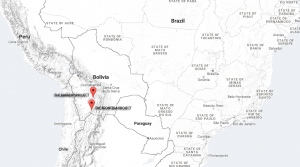
The Barreno Project – Welcome to Elephant Country
Location & Access
This silver project is located in the Quijarro Province in the Department of Potosi in southern Bolivia.
The property is representative of the silver zinc lead deposits that occur in the southern Bolivian Andes, hosted in turbidites (sandstone, and sandy slates) of Ordovician age.
The Barreno concession covers 40 quadrants in extension (1,000 hectares) and is situated 20 km SE of Cerro Rico de Potosi, and 15 km NE from the major silver mine of Porco (straight lines), another world-class deposit. Moreover, it occurs immediately neighbouring at least one other known silver ore deposit, the Chachacomiri mine to the north.
The property is easily accessible year round by two main routes the first via Potosi-Visija (25km) and the other Potosi – Cacho Tambo (35 km; 20km paved).

Barreno lies along the massive silver trend of Cerro Rico
Geology & Mineralization
Geologically, the property is located in one of the most prolific mineralized areas in the world, in the region of the famous Cerro Rico (Rich Hill) of Potosi. The extensive belt of polymetallic mineralization in the silver-tin belt is related to Miocene magmatism that affects both sedimentary and igneous rocks. The immense amounts of silver in the Cerro Rico, influenced the entire economy of the Viceroyalty and even changed the European and Spanish economies. The fact that our tenement occurs directly along strike from Cerro Rico the highlights its prospectivity.
Exploration
To date, two silver-lead-zinc stratiform ore bodies (mantos) hosted within the Cretaceous sandstones were recognized in the property, although at least five other mantos would occur in the lower stratigraphic level toward the thrust between Ordovician and Cretaceous rocks.
Geochemical analysis has been done based on very limited sampling but the results were promising nonetheless. Silver grades were highly variable between 7 to 368 g/t Ag, with the latter being derived from a vein that runs together with an aplitic dyke. Another interesting value of 168 g/t Ag was obtained in the wall-rock of a vein. Silver of course is the main metal of the property since it is located in the same belt of Cerro Rico and Porco mines, i.e., possibly sharing the same magmatic chamber.

Widely disseminated dacite breccia
Consistent zinc values varied from 0.31 to 3.55% while lead values ranged from 0.10 to 50.22% Pb. Except for a couple of values that were less than 0.2%, the remainder would be considered moderately to highly anomalous. Similarly, as with silver and zinc, lead would be a main metal in the property. Au values meanwhile, were consistent from 0.3 to 0.5 g/t, which is interesting from the viewpoint of bulk mineralization. Gold is likely to occur at the Barreno because its proximity to the adjoining property containing gold hosted in Ordovician rocks.
As a first stage, Pacha with its concessionaire partner is currently undertaking a detailed surface sampling programme that will be NI -43-101 compliant. Pacha’s geologist, Dr. Osvaldo Arce, is the only the Bolivian national currently holding Qualified Person certification in the country.
Dr Osvaldo Arce chip sampling at the Barreno for geochem analysis
Why Bolivia?
Bolivia is a country with a long mining heritage and today’s existing industry is a vibrant one. Some of the major are well established and have been able to operate successfully and unfettered by the leftist administration of Evo Morales including Sumitomo, Coeur de Laine, Orvana, and Pan American Silver.
Notwithstanding its turbulent political history and the impact on foreign investment in the past, the government has come to the realization that it must more actively promote investment in the mining sector. With diminishing royalties from the oil gas sector due to weak commodity prices, the government has had to liberalize trade and reform certain key sectors including mining in order to attract foreign investors and bolster the economy.
This includes a major reform of the mining law in 2014, to encourage investment in the sector by actively overseeing the consultative process to achieve social license from the local communities and indigenous groups.
The legislation enacted streamlines a process for Free, Prior and Informed Consent handled by the Administrative Jurisdictional Mining Authority. In this case, AJAM facilitates a series of consultations between the mining company and the affected population, limited to a maximum period of four months. If an agreement is not reached, AJAM will mediate and if the parties still fail to reach an agreement, the Ministry of Mining can issue a ministerial resolution to approve the mining contract.
Very few jurisdictions in the world afford this type of de facto investor protection by facilitating social license on behalf of the foreign miner and in such a short time frame.
Pacha Resources has mitigated much of the business risk sometimes associated with Bolivia by virtue of the quality its management and their expertise in mining law, geology, exploration, and engineering. With over 80 years of combined experience, our Latin America team plays a pivotal role in the communities to obtain social licence and win government support.
As a country considered by many geologists to be the most mineralogically endowed on the planet, Bolivia remains hugely unexplored. According to the most recent data from Ministry of Mines and Minerals, of the total territory considered to be of geological significance, only 10% has been staked and/ or concessioned.
After years of neglect by international investors due to the perceived political risk associated with the Morales government, Bolivia is slowly making its way back into the mainstream of the international mining community.
Although Bolivia is not uppermost in minds of the investment community as the next Ecuador the country is taking a more overtly pro-investment stance and as result gaining traction in some foreign equity markets.


